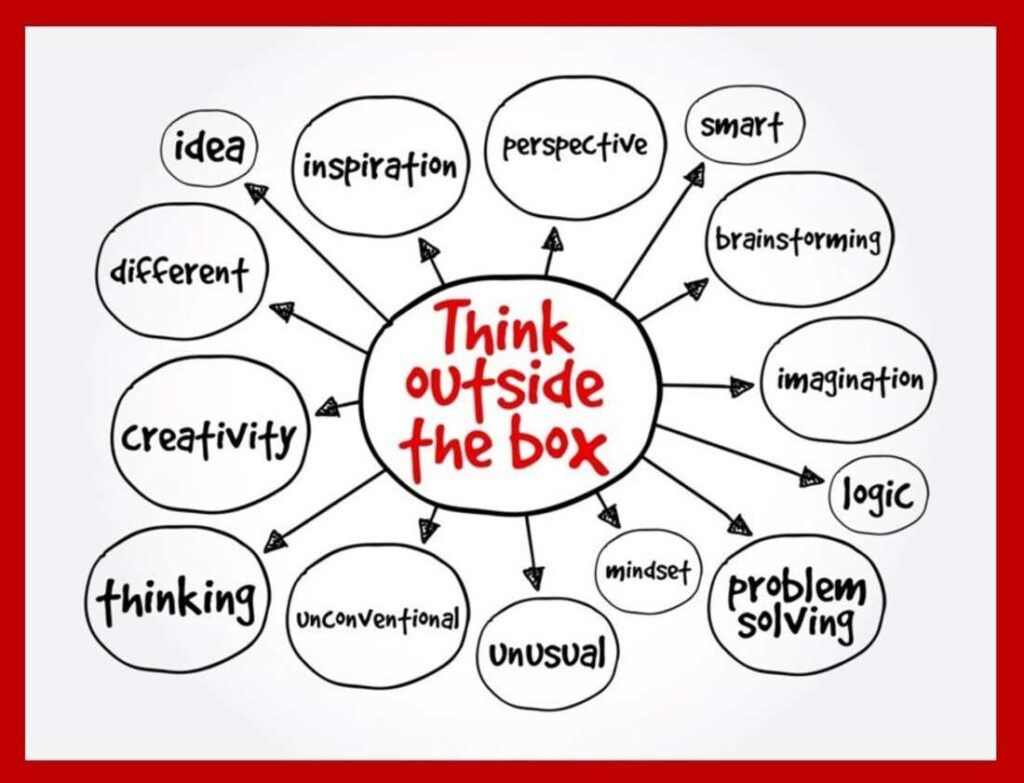What Is Outside In Thinking For Dummies – A Beginner’s Guide!

Outside-in thinking is an approach that emphasizes understanding the needs and perspectives of customers or users before designing products, services, or business processes. This method involves starting from the user’s viewpoint and working backwards to create solutions that effectively meet their requirements, focusing on customer engagement and satisfaction.
Table of Contents
Understanding What is Outside-In Thinking for Dummies:

Outside-in thinking is a mindset where businesses focus on understanding customer needs, wants, and expectations before making decisions or creating products. Instead of prioritizing internal processes, it starts by stepping into the customers’ shoes. This approach helps companies identify challenges and opportunities from the customer’s perspective.
The goal is to address customer pain points and fulfill their desires. By listening to customers and analyzing their behavior, businesses can create solutions that meet real needs. This shift leads to products and services that resonate with the audience, ensuring long-term success.
Why Outside-In Thinking Works:
By focusing on the external world—the customers, competitors, and the broader market—outside-in thinking ensures that businesses are not just creating products for the sake of selling but are creating real value. This approach helps companies:
- Stay relevant in a competitive marketplace by adapting to changing customer preferences.
- Build stronger, long-lasting relationships with customers by addressing their evolving needs.
- Make informed decisions backed by real-time data, rather than relying solely on intuition or internal assumptions.
Key Characteristics of Outside-In Thinking:
To better understand outside-in thinking, here are its key characteristics:
- Customer Focus: Putting the needs of the customer at the center of all decisions.
- Empathy: Understanding and relating to the challenges and desires of the customers.
- Market-driven Insights: Using real-time data and trends from the market to guide business actions.
- Feedback Loops: Constantly gathering feedback to adjust and improve decisions and strategies.
Outside-in thinking is all about understanding the broader picture, including customer behavior, market shifts, and trends, while looking beyond internal operations to see the bigger market environment.
Why Does What is Outside-In Thinking for Dummies Matter?
Outside-in thinking is crucial because it helps businesses stay relevant and competitive in an ever-changing market. When businesses adopt this mindset, they are more likely to create solutions that customers actually need and want, rather than focusing solely on internal strategies.
Benefits:
- Improved Customer Satisfaction: When businesses design their products or services around what the customers truly need, it leads to happier, more loyal customers.
- Increased Innovation: Outside-in thinking pushes companies to explore new ideas based on real-world needs, encouraging creative solutions.
- Better Decision Making: By listening to customers and analyzing trends, companies can make smarter, data-driven decisions.
- Competitive Edge: Understanding market trends and customer pain points can give businesses a significant advantage over competitors.
Also Read: Amazon Marketing Specialist Byhyperzon – Unlocking Amazon Success!
Steps to Adopt What is Outside-In Thinking for Dummies:
If you want to start using outside-in thinking in your business, follow these simple steps:
Listen to Your Customers:
Your customers are your biggest source of insights. Take the time to listen to their feedback through surveys, interviews, social media, and customer reviews. Pay attention to their challenges, desires, and expectations.
Analyze Market Trends:
Look at the broader market landscape. What are the emerging trends, and how are competitors responding? Analyzing trends helps you understand what’s currently important to your customers and guides your decisions accordingly.
Create Solutions Based on Insights:
Once you’ve gathered customer feedback and analyzed market trends, start developing solutions that directly address those needs. These solutions should be designed to make your customers’ lives easier or more enjoyable.
Test and Iterate:
After launching your solution, it’s important to test it with real customers and gather their feedback. Use this feedback to make improvements and keep iterating until you’ve developed the best possible solution.
Common Pitfalls to Avoid:
While adopting outside-in thinking can be extremely beneficial, there are some common mistakes to avoid:
- Ignoring Internal Capabilities: While focusing on customers is essential, businesses should also ensure they have the resources and capabilities to deliver the solutions.
- Overlooking the Bigger Picture: It’s important to look at market trends and customer feedback, but don’t forget to consider your business’s long-term strategy.
- Failing to Continuously Engage Customers: Outside-in thinking is not a one-time effort. Constant engagement with customers is necessary to adapt to changing needs and preferences.
Examples of What is Outside-In Thinking for Dummies in Action:

Several companies have successfully adopted outside-in thinking to deliver superior products and services. A few examples include:
- Apple: Apple is known for designing products that focus on ease of use and customer experience, continuously seeking feedback from users to improve its offerings.
- Amazon: Amazon’s customer-centric approach allows it to constantly innovate based on customer behavior and feedback. For example, their personalized recommendations and fast delivery services are results of outside-in thinking.
- Tesla: Tesla listens to customer feedback to continuously enhance the performance of its electric cars, regularly updating software to improve user experience.
Challenges in Adopting What is Outside-In Thinking for Dummies:
While outside-in thinking can yield great results, it’s not without challenges. These include:
Cultural Resistance:
Some companies have a strong internal culture that prioritizes traditional ways of doing things. Shifting to an outside-in mindset can be a difficult cultural transition that requires leadership support and employee buy-in.
Time Investment:
Listening to customers, gathering insights, and iterating on solutions takes time. Businesses need to be patient and willing to invest in this process to see long-term results.
Information Overload:
With so much customer data and market information available, it can become overwhelming to sift through everything. It’s important to focus on the most relevant and actionable insights that will drive your decisions forward.
FAQ’s:
What are the benefits of outside-in thinking?
Outside-in thinking helps businesses understand customer needs better, leading to happier customers, more innovation, and smarter decisions.
How can I implement outside-in thinking in my business?
To implement outside-in thinking, listen to your customers, study market trends, and create solutions based on what your customers want.
What is the difference between inside-out and outside-in thinking?
Inside-out thinking focuses on what the company can do, while outside-in thinking focuses on what the customers need and want.
How long does it take to adopt outside-in thinking?
The adoption of outside-in thinking can take time, depending on the company’s culture and the complexity of the market. It may take a few months to start seeing tangible results.
Can small businesses benefit from outside-in thinking?
Absolutely! Outside-in thinking can help small businesses stay agile, understand their customers better, and differentiate themselves in a competitive market.
What are some tools for implementing outside-in thinking?
Customer surveys, market analysis tools, and customer feedback platforms are essential in gathering the insights needed for outside-in thinking.
Conclusion:
Outside-in thinking is a valuable approach for any business looking to improve its products, services, and customer satisfaction. By focusing on the customer’s perspective and continuously adapting to their needs, companies can remain competitive and successful. The key is to listen to your customers, stay on top of market trends, and create solutions that resonate with your audience.
Also Read:




